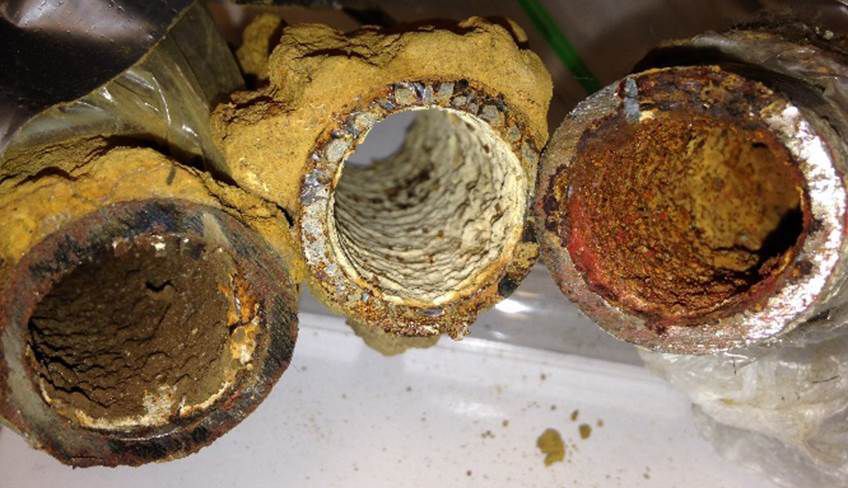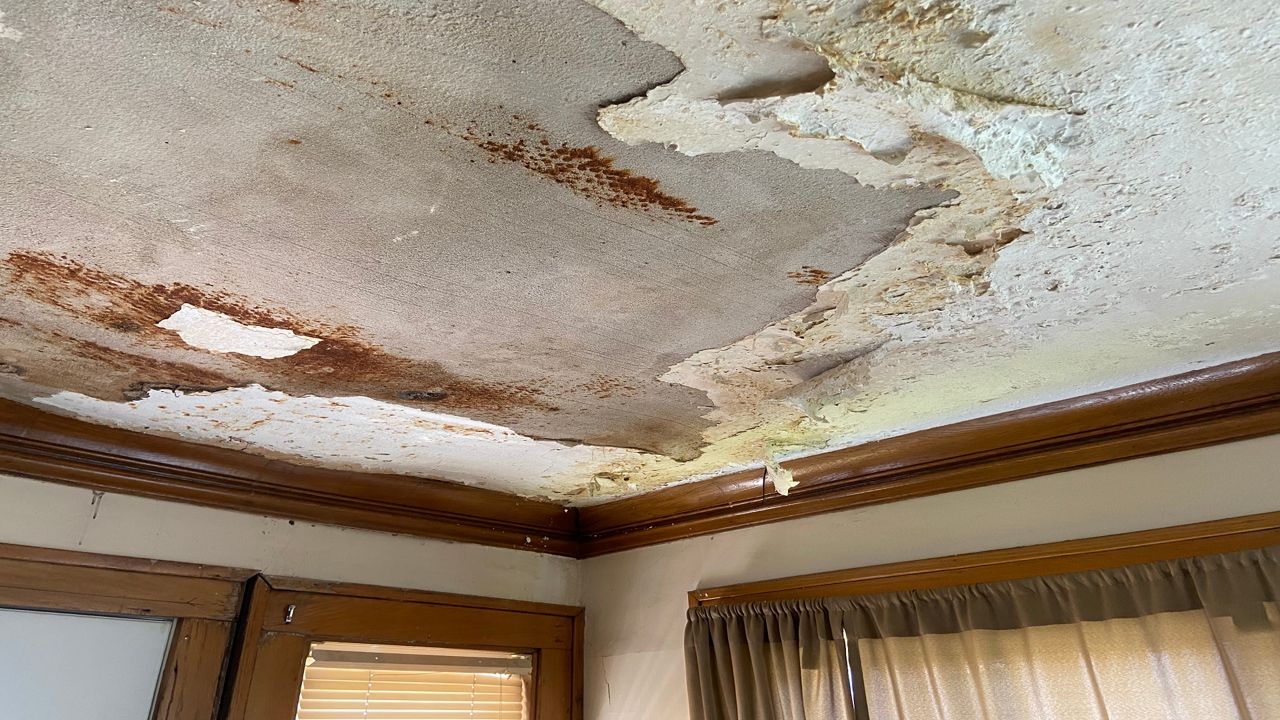CINCINNATI — Lead paint hasn’t been used since the late 1970s, and many cities stopped using the metal in plumbing materials, such as water lines, more than 90 years ago.
But while lead isn’t being used in new construction today, many aging structures still contain the hazardous and toxic material.
What You Need To Know
- The annual Lead Poisoning Prevention Week serves as an opportunity to remind people about the dangers of lead and resources available to help prevent health risks
- Lead can be a serious health risk to children and pregnant women
- People Working Cooperatively works with local and state governments to help sign people up for lead remediation programs
- Greater Cincinnati Water Works will pay to replace lead service lines to residential properties
As part of National Lead Poisoning Prevention Week, organizations such as People Working Cooperatively (PWC) and Greater Cincinnati Water Works are getting out the word about checking lead levels in your home.
Both organizations also reminded homeowners and renters they may be eligible for financial help with removing lead hazards, such as water service lines or paint through government programs.
PWC—a nonprofit serving low-income, elderly, and disabled homeowners—is one of the local organizations working to reduce the risk of lead.
“We know that nearly all lead poisoning happens in the home because lead has been used for a long time in a variety of products found in and around the house,” said Nina Creech, senior vice president of operations for PWC’s Whole Home division. “By creating programs that address environmental health hazards where kids live, we can prevent those health problems from occurring.”
Lead poisoning is still a real risk in 2022
Lead Poisoning Prevention Week tries to raise awareness about the serious health effects related to extended exposure for young children and ways to reduce exposure at home.
There are roughly 3.6 million American households that have children under the age of 6 living in homes with lead exposure hazards, according to PWC. But issues are especially challenging in Ohio—a place with aging water infrastructure and a stockpile of homes built before 1978.
Three out of four homes in Hamilton County alone may contain lead-based paint with more than 30,000 children living in these homes, according to PWC.
In 2016, Ohio had the second-most lead service line pipes of any state in the country with more than 6.1 million. GCWW records show there are still 39,500 lead lines in its 800-square mile service area, with more than 35,000 of those within Cincinnati limits.

The vast majority of those lines are in neighborhoods with poverty rates higher than Ohio’s rate, according to a GCWW spokesperson. Nearly 40% are in predominantly Black neighborhoods.
Lead exposure can cause conditions like high blood pressure or sustained joint and muscle pain. But the biggest risk is to young children.
Prenatal and early childhood exposure to lead can disrupt the natural development process, making children under 6, including the unborn, the most vulnerable to lead poisoning.
Issues can range from slowed growth and loss of appetite to hearing loss and development delays, including irreversible neurological damage.
Adult women exposed to high levels of lead also face a risk of delivering prematurely or even miscarriage.
“Young children’s developing brains are very sensitive to lead and there is no safe level of lead,” said Dr. Nicholas Newman, the medical director of Cincinnati Children’s Hospital Medical Center’s Pediatric Environmental Health and Lead Clinic.
Children are mostly exposed to lead through eating small amounts of lead-contaminated dust, Newman added. He noted the lead gets into dust from old paint, soil, as well as caregivers bringing it home on their clothes from work.
Historically, lead was used in plumbing—lead water service lines to homes, pipes and fixtures in the home. He called exposure from water “an ongoing concern, as well.”
“Since all the sources of lead add up, it’s important to address all of them through proper maintenance of buildings built before 1978, avoiding bringing lead dust home from work, and using an approved water filter, as appropriate.”
Helping to get the ‘lead’ out to remove household hazards
PWC President Jock Pitts called lead poisoning a “very real threat” but also something that’s preventable. And there are resources available to address those issues.
The City of Cincinnati, the Hamilton County Department of Public Health and the Ohio Department of Health all have programs aimed at addressing lead paint risks in homes across southwest Ohio.
PWC partnered with those agencies to serve as the centralized hub for information, programs and resources to connect families to the services they need, Creech said.
Over the years, PWC has provided work and administered programs that removed lead from nearly 400 homes, affecting the lives of 923 people.
“If you call us, we’re going to plug you into a program,” Creech said. “That may sound simple, but we feel it’s really important because we’ve been told over the years that it’s been very difficult for some people to even navigate the system.”
PWC has focused recently on identifying and eliminating barriers some face when seeking treatment for lead-related issues, in conjunction with Cincinnati Children’s Hospital.
“Because of all that, we’re going to present in the clinic once a week by the end of the year so when [Cincinnati Children’s] is seeing patients with lead-related issues, we’re able to sign them up for all the programs that can help them and benefit families,” she said.
One resident who qualified for the program is Carla Webb. She only learned of the lead risks in her Walnut Hills home after one of her great-grandchildren tested high for exposure late last fall.
That great-grandchild, who turned 2 in June, had been living with her.
Work on Webb’s St. James Avenue home included removing lead remnants, painting, installing new windows, adding new siding and updating her front porch.
Her neighbors saw the work taking place on the exterior and have been commenting on the updates to her property,” Webb said. They’ve especially noticed the “beautiful windows.”
The window improvements are also saving her money on energy bills, Webb said, which she called “an extra plus.”
“I just want to say thank you,” Webb said. “This is going to help my great-grandson, but also my grandchildren and other great-grandchildren, who come over to visit and spend the night on a regular basis.”
While the program will help those in need, services won’t take place overnight, Creech said. After a positive test for lead, PWC still needs to find a contractor and order necessary supplies. She mentioned things like windows are on a months-long back order.
”Ordering windows right now is anywhere from six to 10 weeks depending on the vendor that you’re working with, so I would say from start to finish it can take someone like four or five months to get through the entire program,” she added.
Once remediation work begins, the residents need to move out of their home.
Creech stressed renters who qualify for one of the non-water lead remediation programs receive funding to cover the cost of temporary relocation while repairs are made.
Keeping the city’s water lines safe
In December, Cincinnati City Council agreed to fund 100% of all lead service line replacements for Water Works customers.
They don’t need to move out of their home while repairs are taking place, though they may need to use bottled watement or boil their water for the time being.
Anyone whose water tests positive for lead is eligible for a free water filter.

Greater Cincinnati Water works hasn’t used lead in its distribution lines since 1927, but some lines that are older remain in place. For years, the utility has used a corrosion control process to protect the interior of service lines and prevent them from flaking off into the water.
After the water crisis unfolded in Flint, Mich. a few years ago, Water Works expanded its Lead Service Line Replacement Program with the goal of making the removal of privately owned service lines more affordable.
To be eligible for the program, property owners must sign an agreement allowing a contractor hired by Water Works to do the replacement.
All work is completed by the contractor and Water Works pays him or her directly after all work is completed. The work typically only takes about four to six hours.
Both Water Works and PWC offer free lead testing. Residents can contact PWC to set up a home tour and risk assessment.
Water Works has a free online map where residents can type in their address and check whether their home or business has a lead line.
For more information on the People Working Cooperatively lead programs, visit PWChomerepairs.org/leadprevention or call 513-366-4697.



